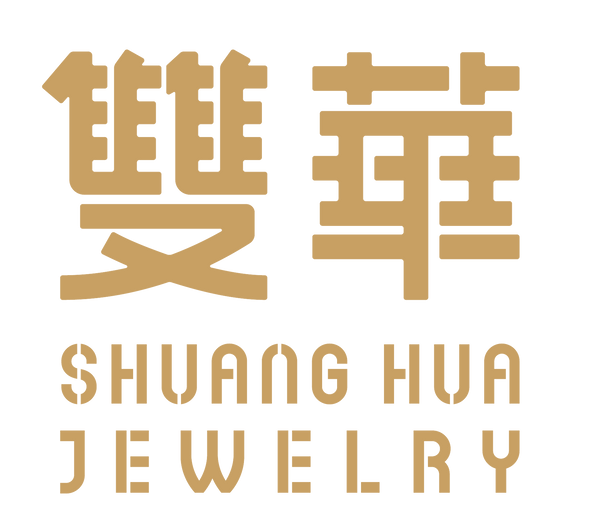Introduction
For centuries, jade jewelry has captivated people across Asia and beyond with its vibrant beauty, symbolic power, and spiritual resonance. Known as the “stone of heaven” in Chinese culture, jade has been treasured not only for its aesthetic value but also for its deep cultural meaning. From imperial dynasties to modern fashion, jade continues to embody elegance, prosperity, and protection.
This article will explore the history and culture behind jade, the traditional significance it holds in different societies, and how jade remains relevant in today’s world of fashion and personal expression.
1. Origins of Jade Jewelry

The use of jade dates back more than 7,000 years. Archeological findings in China, Mesoamerica, and New Zealand show that jade was one of the first stones humans shaped into tools, ornaments, and ceremonial items.
-
China (Neolithic Period): Jade artifacts were unearthed in the Liangzhu culture (3300–2300 BCE), symbolizing authority and spirituality.
-
Mesoamerica: The Mayans and Olmecs prized jade as more valuable than gold, using it in religious rituals.
-
Maori of New Zealand: Jade (pounamu) was revered as a treasure passed down through generations.
Table: Jade in Early Civilizations
| Civilization | Time Period | Jade Usage | Cultural Meaning |
|---|---|---|---|
| China (Liangzhu) | 3300–2300 BCE | Ritual disks, ceremonial axes | Authority, heaven & earth balance |
| Mayan & Olmec | 1000 BCE–900 CE | Masks, ornaments, burial offerings | Immortality, divine connection |
| Maori (New Zealand) | 1200 CE onwards | Tools, pendants, family heirlooms | Spiritual power, protection |
2. Jade in Chinese Dynasties
No civilization is more deeply tied to jade than China. The stone was seen as embodying Confucian virtues: benevolence, wisdom, integrity, and loyalty.
-
Han Dynasty (206 BCE–220 CE): Jade burial suits were made to preserve the body of royals.
-
Tang Dynasty (618–907 CE): Jade became more decorative, adorning jewelry and art.
-
Qing Dynasty (1644–1911 CE): Imperial collections of jade objects showcased wealth and artistry.
The Chinese saying “Gold has value; jade is invaluable” still reflects the unmatched cultural reverence for jade.
3. Symbolism and Traditional Significance

Across cultures, jade carries symbolic meanings that go beyond its physical beauty.
-
Protection: Believed to guard against evil and misfortune.
-
Prosperity: Associated with wealth and success.
-
Health: Thought to have healing properties that promote balance and longevity.
-
Harmony: Symbolizes peace in relationships and spiritual connection.
In Chinese weddings, jade is often gifted as a blessing for a prosperous marriage. Parents also give jade pendants to children as protective amulets.
4. Jade Jewelry in Modern Fashion
Despite its ancient roots, jade is not confined to history—it has seamlessly entered modern fashion. Today, jade jewelry is embraced by designers and collectors worldwide for its timeless elegance and versatility.
-
Minimalist fashion: Simple jade pendants or bangles pair well with everyday outfits.
-
Luxury couture: High-end brands incorporate jade into fine jewelry collections.
-
Cultural identity: Many still wear jade to honor their heritage and family traditions.
Why Jade Remains Popular
-
Natural uniqueness: Every jade piece has a one-of-a-kind texture and shade.
-
Cultural heritage: Owning jade feels like carrying history and tradition.
-
Sustainable choice: Jade jewelry often lasts for generations.
5. Different Types of Jade Jewelry
A. Jade Rings
Jade rings are elegant and symbolic, often associated with commitment, balance, and prosperity.
B. Jade Bracelets
The classic jade bracelet is believed to ward off harm and protect the wearer, especially in Chinese tradition.
C. Jade Pendants and Necklaces
Worn close to the heart, jade pendants carry protective and spiritual meaning.
D. Jade Earrings
Jade earrings combine subtle elegance with cultural symbolism, making them suitable for both casual and formal wear.
6. Global Influence of Jade Jewelry
While China remains the heartland of jade appreciation, other cultures also value jade:
-
Mesoamerica: Associated with life, fertility, and the afterlife.
-
Maori culture: Pounamu jade is treasured as a family heirloom.
-
Western fashion: Increasingly admired for its exotic and spiritual aura.
This global reach highlights jade’s universal appeal as a gem that transcends time and borders.
7. The Future of Jade Jewelry
The appreciation for jade jewelry continues to grow, with modern buyers seeking pieces that blend traditional significance with contemporary style. Online platforms like Shuanghua provide curated jade collections that honor cultural roots while appealing to global trends.
As sustainable fashion becomes more important, jade’s durability and timelessness make it a valuable alternative to fast-fashion accessories.
Conclusion
The history and cultural significance of jade jewelry reveal its enduring value as more than just an ornament. From ancient Chinese emperors to modern fashion icons, jade has symbolized prosperity, protection, and elegance for thousands of years.
By wearing jade today, you carry not only a piece of natural beauty but also centuries of tradition and heritage. Whether you are exploring the history and culture of jade, admiring its traditional significance, or embracing jade in modern style, this gemstone will always remain a timeless treasure.

